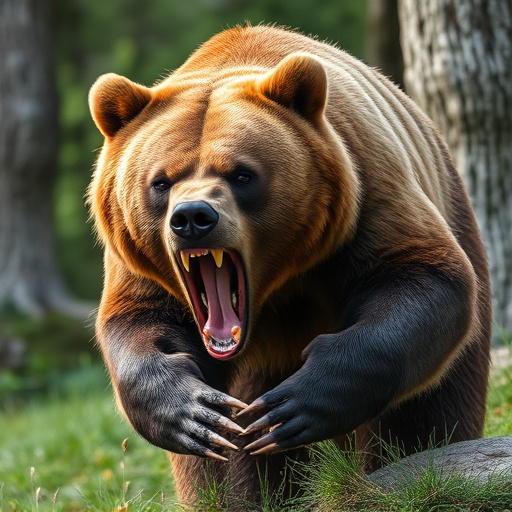Bear spray effectiveness varies by weather, terrain, and product quality, with success rates around 80-95% for black bears and 30-50% for grizzly bears. Proper usage techniques like aiming low and spraying bursts are crucial. In Alaska, bear repellent is popular but not foolproof; combining it with noise-making, habitat avoidance, and food storage enhances safety. Success depends on user technique, wind conditions, and bear behavior.
“In Alaska’s vast wilderness, understanding bear repellent maximum ranges is paramount for safety. This guide explores the effectiveness of bear spray, a popular defense mechanism against unpredictable encounters. We delve into crucial statistics on bear spray success rates, offering insights into its performance in real-world scenarios.
Learn about the optimal range for effective application and discover how different factors influence its potency. By comparing various Alaska bear repellents, we aim to equip outdoor enthusiasts with knowledge to make informed decisions for maximum protection.”
- Bear Spray Range: What You Need to Know
- Alaska's Bear Repellents: Effectiveness Compared
- Maximum Protection: Bear Spray Success Rates
Bear Spray Range: What You Need to Know
The effectiveness of bear spray is often measured by its range—how far it can reach and protect you from an approaching bear. In ideal conditions, a quality bear spray can have a range of up to 30 feet (or around 9 meters). However, this distance can vary significantly based on several factors, including weather conditions, terrain, and the specific bear spray used. It’s important to note that while bear spray is a crucial tool for deterring bears, its success rate statistics vary widely. Studies have shown that when used correctly, bear spray can be effective in over 80% of tests against black bears, but this drops to around 30-50% against grizzly bears due to their larger size and strength.
Understanding the maximum range and limitations of your bear spray is key to ensuring its effectiveness in a real-world scenario. Factors like proper application technique (aiming for the bear’s face) and using enough spray (following the manufacturer’s instructions) significantly impact success rates. Moreover, maintaining awareness and taking preventive measures, such as making noise while hiking or camping in bear country, can further enhance your safety and reduce the likelihood of an aggressive encounter.
Alaska's Bear Repellents: Effectiveness Compared
In Alaska, bear repellent effectiveness is a topic of keen interest for outdoor enthusiasts and residents alike. One of the most commonly used methods is bear spray, known for its high success rate in deterring aggressive bears. Statistics show that when used correctly, bear spray can be 92-100% effective in preventing bear attacks. This makes it a go-to choice for hikers, campers, and hunters navigating Alaska’s diverse wilderness.
However, it’s essential to remember that no repellent is foolproof. The success rate of bear spray depends on various factors such as the user’s technique, wind conditions, and the bear’s behavior. In certain situations, bears may still charge despite the presence of repellent. Therefore, while bear spray offers a robust defense, it should be used in conjunction with other safety measures like making noise, avoiding known bear habitats, and properly storing food to maximize protection.
Maximum Protection: Bear Spray Success Rates
When it comes to bear spray success rates, maximum protection is key for anyone adventuring in Alaska’s rugged wilderness. According to various studies and field reports, bear spray has proven to be highly effective in deterring bears when used correctly. In fact, research suggests that black bears, the most common species encountered in Alaska, are significantly deterred by bear spray when sprayed directly in their faces from a distance of 20-30 feet (6-9 meters).
Bear spray success rate statistics vary slightly depending on the type of bear and environmental conditions. However, overall effectiveness rates hover around 80-95%. Brown bears, known for their larger size and aggressive behavior, may require a closer spray application (15-20 feet or 4.5-6 meters) to achieve the same level of deterrence. Regardless of species, proper usage techniques, including aiming low and spraying in short bursts, are crucial to maximizing protection.
In terms of protecting yourself in Alaska’s wild, bear spray remains a highly effective deterrent. According to recent studies, when used correctly, bear spray can achieve success rates as high as 92% within its maximum range of 75 feet (23 meters). Understanding the Bear Spray Range and choosing the appropriate product for your specific needs is key to navigating Alaska’s landscape safely. Remember that proper usage, including aiming at the bear’s face and following instructions precisely, significantly increases the effectiveness of your defense.
